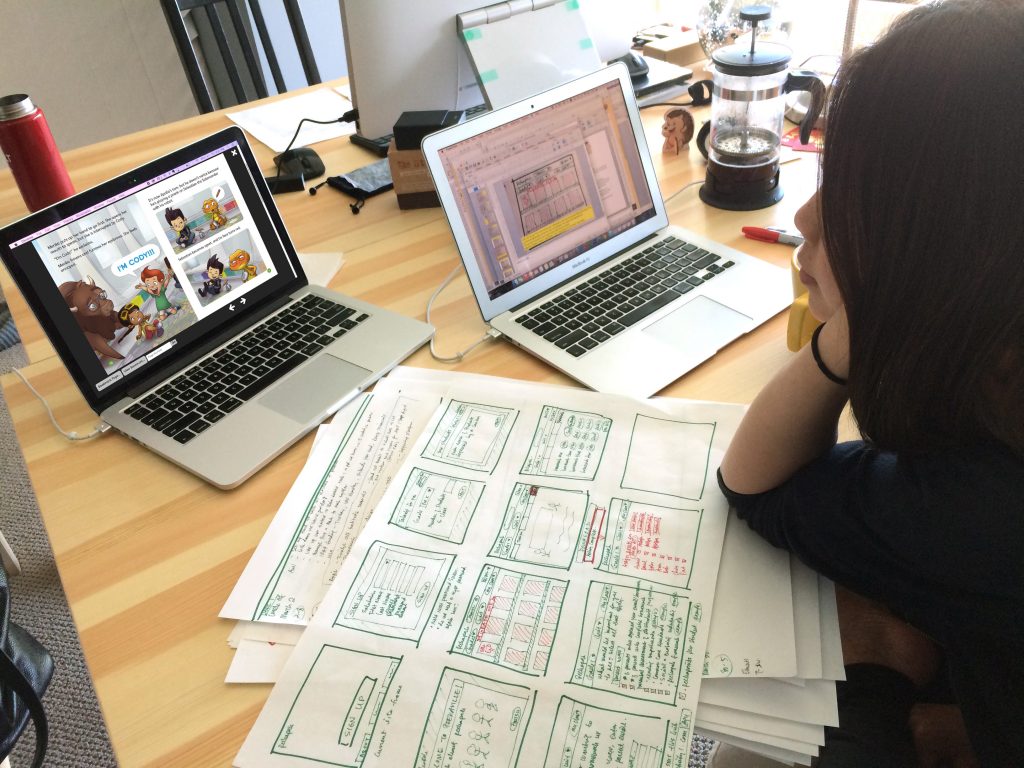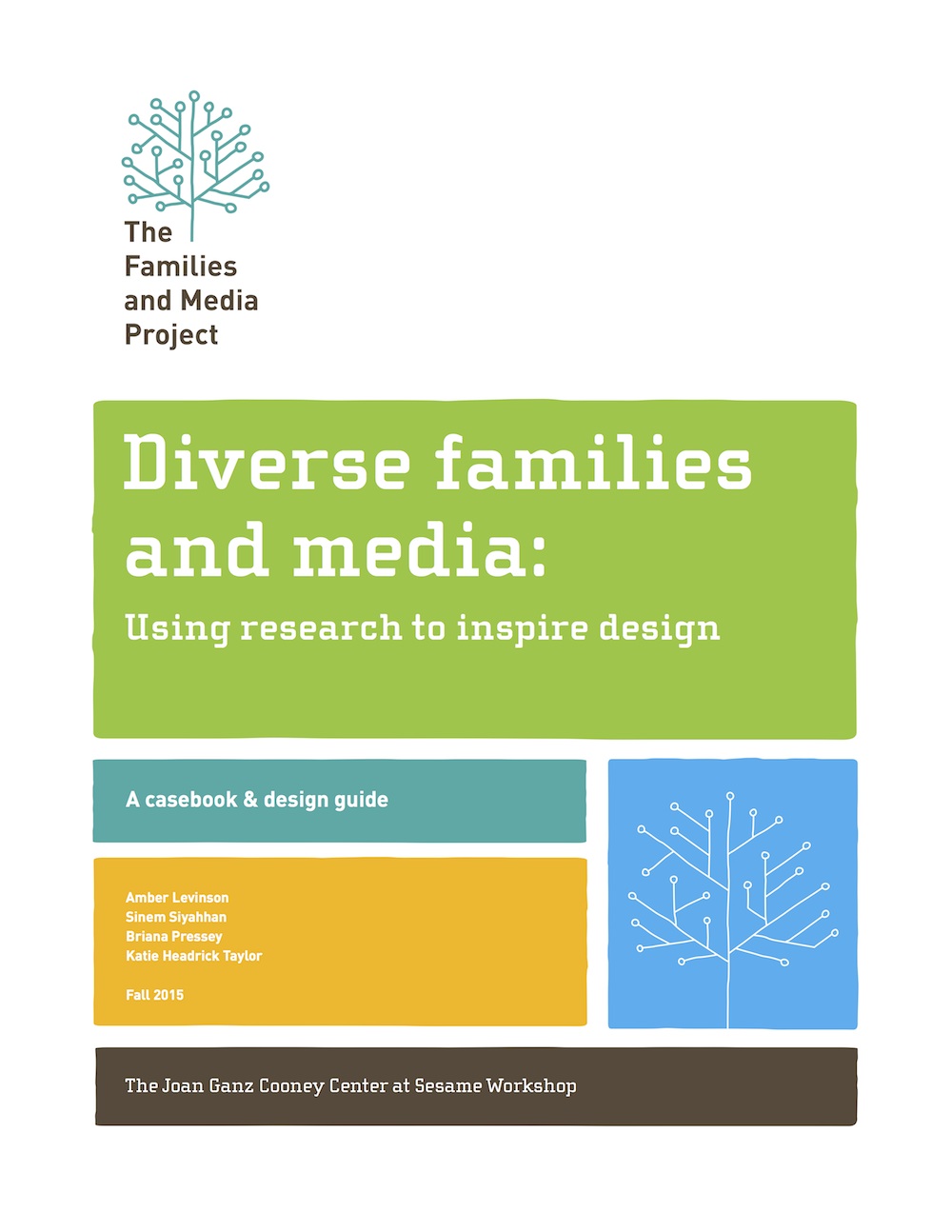Said Joan Ganz Cooney: “Without research, there would be no Sesame Street.”
I can say the same about my company, Peekapak. We’ve spoken to over 300 teachers to create Peekapak, a social-emotional learning program for teachers and parents … but, as you can imagine, that takes considerable time, and while we love speaking to educators, we only have so many hours in a day. What’s encouraging for entrepreneurs like myself is that organizations like the Joan Ganz Cooney Center conduct their own research with experts in the field and make it available for everyone to learn from (thank you!).

Peekapak’s research process
Research plays a vital role at Peekapak. From day one, our ideation stage, we started talking to teachers (our potential users) and we haven’t stopped since. Over 300 teacher interviews later, we’ve tried to ensure that we are delivering something that caters to teacher needs and contains their direct feedback, making it as user-friendly and effective for them as possible. We put the same thought, care, and time into our curriculum development. For every unit, we first conduct a literary review of research studies, academic journals, articles, frameworks, international databases, and best practices. Next, we plan and develop the learning structure of the unit and then review the full unit with education advisors and classroom partners. After every unit, we continue to talk to educators to see how they used the stories and lessons and what they’d change.
Diverse Families and Media: Using Research to Inspire Design
 I was fortunate to get my hands on the Joan Ganz Cooney Center’s research, titled “Diverse Families and Media: Using Research to Inspire Design” through the Families and Media Project. The research takes a case-based approach to highlighting the need for content that inspires and reflects the diverse and wide range of learners and the old and new forms of media they use.
I was fortunate to get my hands on the Joan Ganz Cooney Center’s research, titled “Diverse Families and Media: Using Research to Inspire Design” through the Families and Media Project. The research takes a case-based approach to highlighting the need for content that inspires and reflects the diverse and wide range of learners and the old and new forms of media they use.
Design Challenge: Connecting and learning across different physical settings
Problem: Children benefit when there are strong connections, continuity of learning, and communication between home and school (e.g., Mapp & Kuttner, 2013; Henderson & Mapp, 2002). How might technology facilitate those connections? Schools want families to know more about what children are learning at school, and kids also learn better if their classroom instruction is relevant to their home lives (e.g., educators know what their home lives are like).
How Peekapak tackled this design challenge head-on
Speaking to parents, we heard the same thing time and time again: They ask their child how school was and receive a standard reply: “fine”. Surely many parents can relate to that. There is considerable research that when teachers and parents act as partners and are on the same page in a child’s learning, it greatly improves a child’s chance for academic, relational and lifelong success.
Equipped with this design challenge, we mapped out a student’s learning flow from the classroom to the home and interviewed teachers and parents to learn how they currently keep students connected beyond the classroom. We also learned about use of technology in the classroom and in the home and ways teachers and parents want it incorporated into a child’s learning. Finally, we brainstormed ways the learning from a classroom might be extended into the home space and how to ensure that teacher and parents are both invested in the process.

What Peekapak developed
We’ve developed Peekapak to enable the communication flow from the classroom to the home (and back again) to be seamless, easy and effective for both the teacher and the parent. After a teacher reads an original Peekapak story in class and does a lesson on Gratitude, she can use Peekapak’s platform to send the same digital storybook and a fun discussion question or activity home for parents to do with their child. This enables parents to know what was taught in their child’s class that day, learn the language used, and reinforce that learning in the home through reading the story again and engaging their child in a discussion about the topic.
Now that we’ve tackled this design challenge, it’s time to pick up the “Diverse Families and Media: Using Research to Inspire Design” casebook and design guide to tackle another design challenge!
 Angie is the Co-Founder of Peekapak, a company leading innovation in education focusing on social-emotional learning and character development. Formerly an Associate Director of Research at Starcom MediaVest Group and graduate of Queen’s University (B. Commerce) in Canada, Angie’s dedication to education has led her to teach children in the UK and research children’s education and wellbeing in Asia. Follow Peekapak on Twitter at @peekapak.
Angie is the Co-Founder of Peekapak, a company leading innovation in education focusing on social-emotional learning and character development. Formerly an Associate Director of Research at Starcom MediaVest Group and graduate of Queen’s University (B. Commerce) in Canada, Angie’s dedication to education has led her to teach children in the UK and research children’s education and wellbeing in Asia. Follow Peekapak on Twitter at @peekapak.

